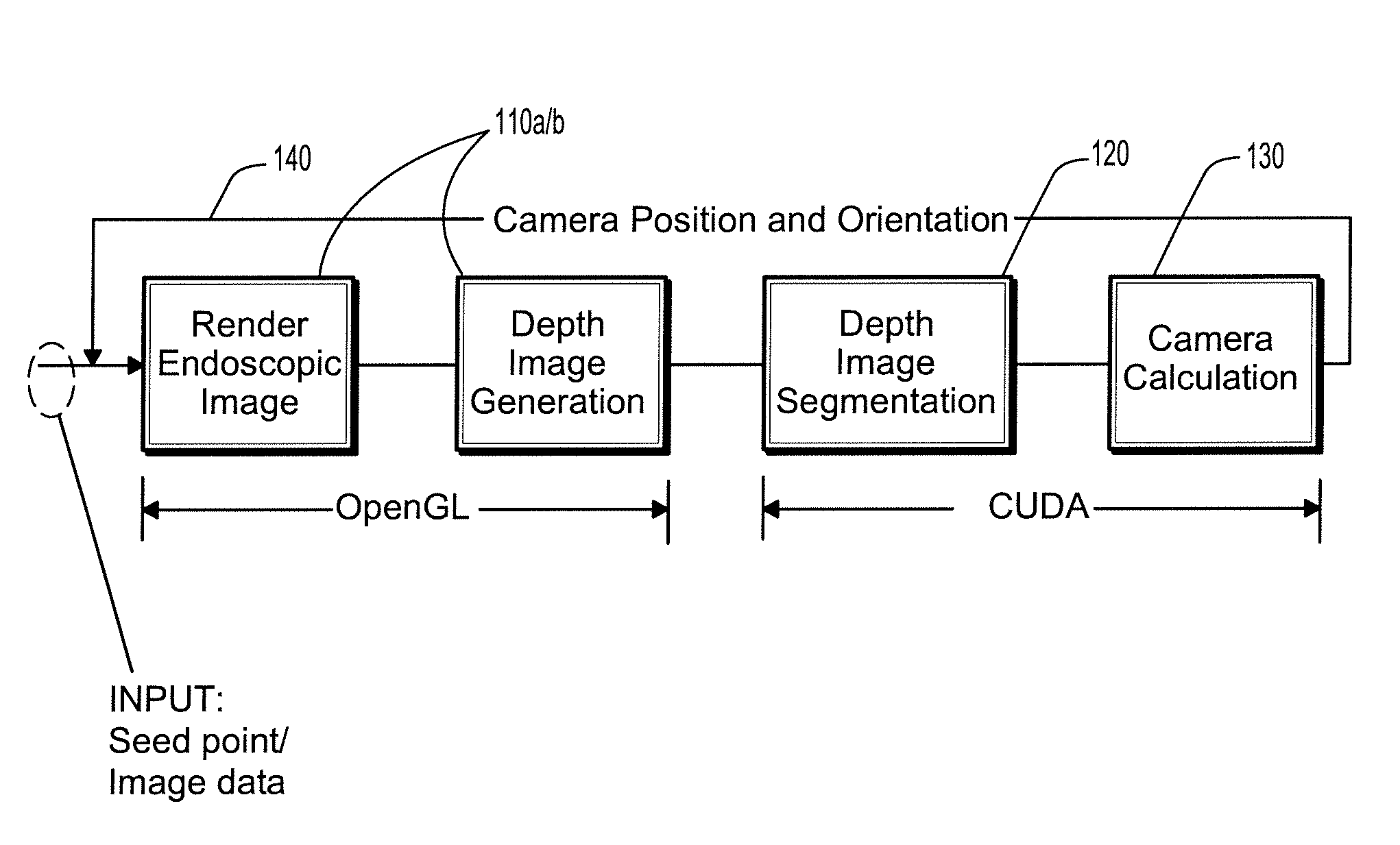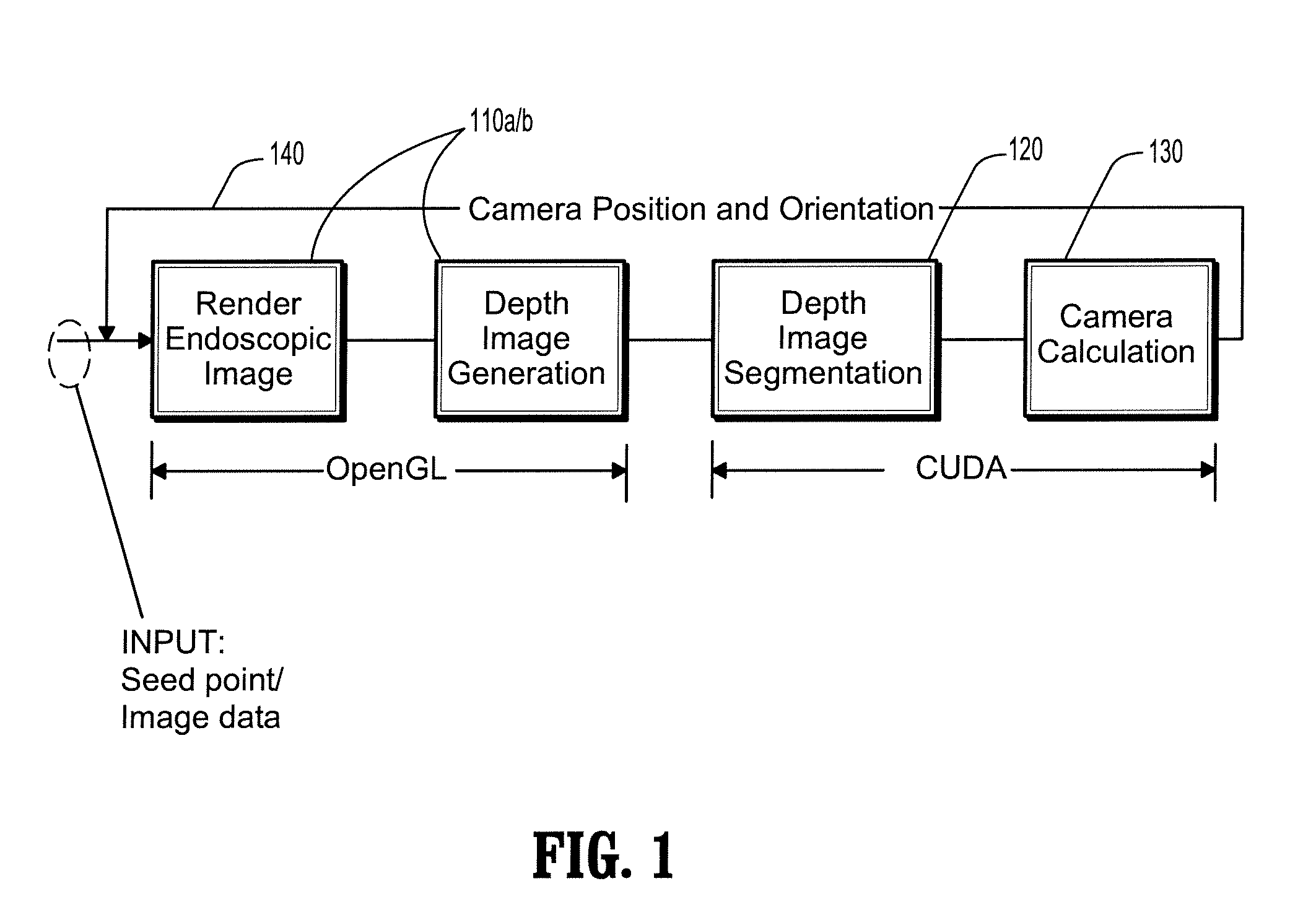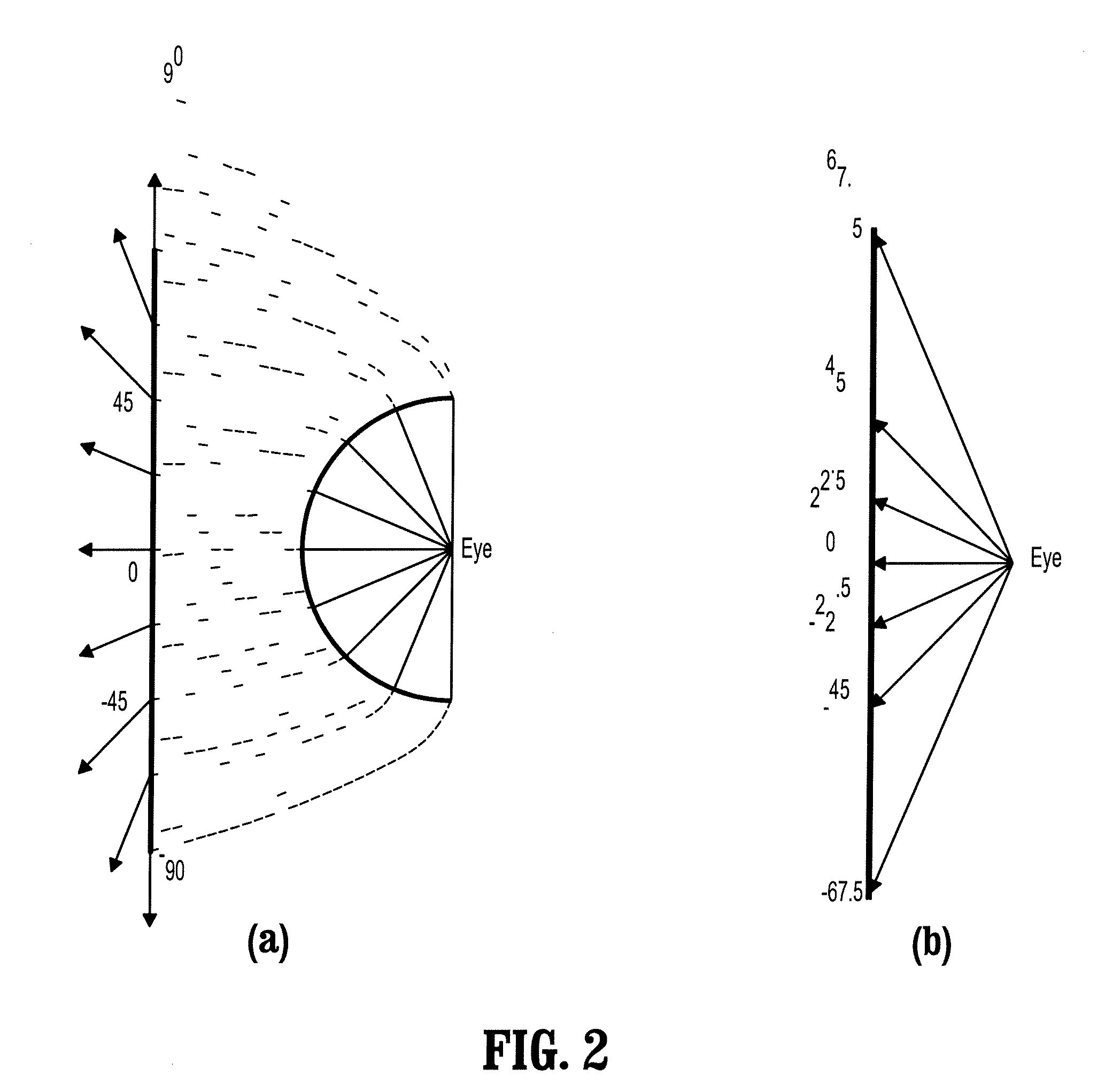Image-based Path Planning for Automated Virtual Colonoscopy Navigation
a virtual colonoscopy and path planning technology, applied in the field of virtual endoscopy, can solve the problems of invasive traditional screening using optical colonoscopy, time-consuming, uncomfortable, and difficult to plan manually, and achieve the effect of smooth virtual endoscopy navigation
- Summary
- Abstract
- Description
- Claims
- Application Information
AI Technical Summary
Benefits of technology
Problems solved by technology
Method used
Image
Examples
Embodiment Construction
[0037]In this disclosure, we present an automatic image-based path planning algorithm for virtual endoscopy (VE) fly-through navigation, in accordance with an exemplary embodiment of the present invention. In our method, preprocessing is not required, and camera position and orientation are calculated on-the-fly using rendered depth images. The only input of our algorithm is lumen computed tomographic (CT) data and a seed point provided by a physician. Therefore, the VE fly-through navigation can be performed immediately after the lumen data are loaded from a computer's hard drive.
[0038]In the following description, our VE method / system will be referred to as a virtual colonoscopy (VC) method / system, since the lumen referenced hereinafter is a colon. The present invention is not limited thereto. For example, our VE method applies equally well to other lumens such as, bronchi and blood vessels, etc.
1. Methodology
[0039]In a VC fly-through navigation system, the path planning algorithm...
PUM
 Login to View More
Login to View More Abstract
Description
Claims
Application Information
 Login to View More
Login to View More - R&D
- Intellectual Property
- Life Sciences
- Materials
- Tech Scout
- Unparalleled Data Quality
- Higher Quality Content
- 60% Fewer Hallucinations
Browse by: Latest US Patents, China's latest patents, Technical Efficacy Thesaurus, Application Domain, Technology Topic, Popular Technical Reports.
© 2025 PatSnap. All rights reserved.Legal|Privacy policy|Modern Slavery Act Transparency Statement|Sitemap|About US| Contact US: help@patsnap.com



